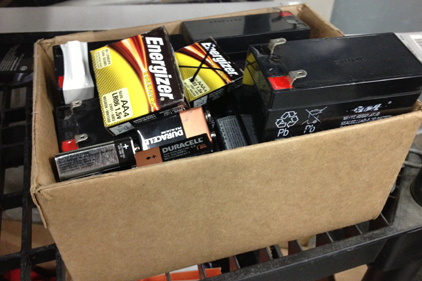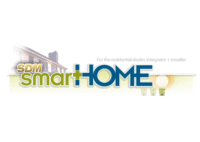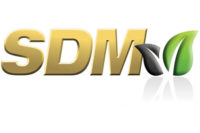
|
| All sizes and shapes of batteries are recycled, along with paper and old metal equipment, at Amherst Alarm, Amherst, N.Y..(Photo courtesy of Amherst Alarms) |
Sometimes green is an opportunity for security; other times it’s a challenge. For example, low-emissivity (low-e) glass, used to promote natural lighting and increase energy efficiency of green buildings, can interfere with the transmission of wireless communication signals. The energy-efficient glass presented a problem for Metis Secure Solutions, Oakmont, Pa., whose emergency communication system depends on wireless networking. The company solved the issue by adjusting placement of antennas and reconfiguring the system. Now Metis Secure’s customers can combine emergency communications with green building standards such as the U.S. Green Building Council’s Leadership in Energy and Environmental Design (LEED) guidelines.
“We are adapting our technology to meet the standards emerging with more and more LEED buildings being built,” says Mark Kurtzrock, president and CEO of Metis Secure Solutions.
It’s just one example of the intersection of green issues and security. Increasingly, green considerations are impacting the security marketplace in a range of ways. Ultimately, environmental issues and security not only have to co-exist, they are closely related. Here’s how one security industry player, Nathan Leaphart, CFO of Electric Guard Dog, Columbia, S.C., sums it up: “As a security company, we are familiar with our role of protecting our customers. We can also take it further and play a role in protecting the environment that our children, and our customer’s children, will grow up in.”
Impact of LEED Building Guidelines
Green requirements are accelerating in the marketplace. Specifically, the new LEED version 4, which comes out June 2013, includes a requirement that 20 products used in a certified building provide environmental product declarations (EPDs) that detail green information. Therefore, a green access control or door hardware product will have an advantage in the marketplace.
The Environmental Product Declarations (EPD), featured in LEED version 4, look like environmental nutrition labels. Each EPD summarizes information about a product's life cycle assessments (LCAs), human health concerns, hazardous substances and recycled content. The more comprehensive statement of the “green-ness” of products is aimed at clarifying environmental issues in the marketplace, where a plethora of “green marks” and certifications often leaves customers confused and where green-washing (or using green claims as a marketing gimmick) is rampant. In the global marketplace, Environmental Product Declarations are becoming mandatory in France and Germany, as examples.
Effects of products on human health are also beginning to be considered. Door opening solutions company ASSA ABLOY, New Haven, Conn., is a member of the Health Product Declaration Collaborative, which addresses the human health aspect of products, such as whether they contain cadmium, lead or any of a list of chemicals. “We’re starting to look at what’s in our products as well as the environmental impact,” says Aaron Smith, ASSA ABLOY’s director of sustainable building solutions. “You may see something like the nutrition label on a cereal box showing up on access control components.”
The building market, where access control and door hardware products especially are used, has an abundance of product categories that have embraced the green spirit – from ceiling tiles, to flooring, to HVAC, to electrical systems. As part of the building market, door hardware, locks and access control systems will be competing in a market where environmental issues are top-of-mind.
Acceleration of the green buildings trend is also obvious in research by McGraw-Hill, New York, which projects that 55 percent of non-residential buildings will be green by 2016. A trend is also emerging to go beyond voluntary certification to make green buildings mandatory. In California, for instance, the CALGREEN Title 24 building standard targets compliance by 2025 or 2030. The International Green Construction code is also beginning to codify some green requirements, and the ASHRAE 189.1 standard includes a 30 percent more stringent energy code.
For some products, becoming more green is a byproduct of other technology advances. The trend away from use of access control cards and to the use of digital credentialing available from a smart phone, for example, offers the environmental advantage of fewer plastic cards being manufactured. However, the market has emphasized the convenience aspect of the technology rather than the environmental benefits. For instance, ASSA ABLOY offers a secure encrypted operating system, which uses a smart phone to provide a mobile key. In the hotel environment, where room cards are ubiquitous, digital credentials or mobile keys could be emailed to an arriving guest and allow them to bypass the front desk and go straight to their assigned room.
Teamwork Promotes the Spirit of Green
The spirit of green is embedded in the culture at Schneider Electric/Pelco’s manufacturing facility in Clovis, Calif. The facility has a Green Team on site, and Schneider Electric also has a Solutions Team that oversees and evaluates environmental operations at various facilities.
The Green Team meets monthly to review new ideas to save energy, to evaluate their progress and consumption year-to-date, and to plan ahead for new directions. The team visits other facilities to see what they are doing and what works. One motivator for green progress is the opportunity to present quarterly updates to the leadership staff. Video boards throughout the complex also highlight progress, as do activities throughout the campus, “Go Green” shirts and a “Go Green” week.
“When you start doing these kinds of projects, you begin with the low-hanging fruit,” says Julie Debenedetto, facilities director for 13 Schneider Electric/Pelco facilities including the Clovis location. “They get excited about it, and they come up with more ideas.” She notes that Schneider Electric has an energy reduction goal of 10 percent in 2011-2014.
Although video cameras require little energy when in use, the process of manufacturing the cameras and other video components uses a lot of energy, and Schneider Electric/Pelco has succeeded in lowering the amount in several instances. The goal for 2012 was to reduce gas and electric usage by 4 percent, and the goal was exceeded – they reached a 7 percent reduction.
For example, use of a 500-degree drying oven is being minimized by ensuring the oven is fully loaded before it is turned on – no more wasted energy when the oven is on but empty. Parts are prepped the evening before and the oven is fully loaded before being powered up. Parts being dried are also hung closer together to get as many parts as possible in the oven at a time and reduce overall usage. Occupancy sensors were installed in several of the warehouse stockrooms and receiving areas. In all, the project saved 89,020 kilowatt hours.
Another example is the evaporative coolers, or “swamp” coolers, in non-climate-controlled areas used for cooling in the manufacturing and production areas. The coolers used to run constantly, but new sensors now reduce the cost of electricity and water by setting the thermostat at 80 degrees. The project, implemented and completed in 2012, saw an immediate payback in the first year. To date, 68,131 kilowatt hours and nearly 2.4 million gallons of water have been saved.
Reducing horsepower in compressors on process lines, the company expected to see an estimated 714,325 killowatt hour reduction in the first year alone.
Helping to drive energy savings at Schneider Electric/Pelco in Clovis is Schneider Electric’s role as a global specialist in energy management. Products include an electrical vehicle charging station, occupancy sensors by Square D, an LED wall pack by Juno Lighting, and gas and electric meters by Powerlogic by Square D, all Schneider Electric companies. “We regularly partner with our Energy Solutions team to model energy usage and energy action projects with returns on investment,” says Debenedetto. “Our international Go Green Team is actively involved in helping the Clovis site come up with new ideas to save energy and communicate wins to our Energy Solutions team.
More Supplier Green Successes
Another supplier that addresses green issues is Avigilon,Vancouver, British Columbiawhose state-of-the-art production facility emphasizes efficiency. The manufacturingsite is located near the head office to simplify access if alterations of products are required. As the company grows, teams are stationed directly in countries where Avigilon has operations to minimize travel and resulting emissions. The company’s long-lasting products save time and energy in production and create little waste. At global headquarters, the company subsidizes public transportation benefits for employees and offers bike storage on site. Also providing green benefits are Avigilon’s active recycling programs and use of e-signatures on forms to minimize printing, faxing and scanning whenever possible.
Fike Corp., Blue Springs, Mo., provider of clean agent fire suppression products, has contributed more than 50,000 trees to American Forest’s Global ReLeaf program to help neutralize the carbon footprint (and global warming potential) of its products. The goals of the ECARO-25plus program include counteracting at least 100 million pounds of carbon dioxide in the atmosphere annually, and adding resources to support reduction of carbon emissions. Fike’s system also performs using less clean agent. As part of the initiative, Fike is a large contributor to the American Forest’s Elk Complex Fire Project working to restore wildfire-ravaged areas of the Klamath National Forest in California. The project provides multiple benefits to local watershed, scenery, recreation and wildlife, and improves habitats for threatened and endangered species such as the Coho and Chinook salmon, steel head trout and the California spotted owl.
Since it began in 1979, Middle Atlantic, Fairfield, N.J., has focused on "environmentally friendly" choices. “Being ‘green’ is of no value if it doesn’t help the business remain sustainable. To this end, we have achieved the prestigious ISO 14001 certification. During the process of achieving this, we documented all of our existing processes, and found further ways to reduce our environmental impact, all while ensuring that our business stays healthy,” Middle Atlantic shares in “Commitment to the Environment.”
“We are proud to hold both ISO 9001 registration for our quality management system in all our United States facilities, and ISO 14001 registration for our environmental management system at our New Jersey headquarters location,” Middle Atlantic told SDM. “Together, these rigorous, independently verified world-class registrations provide the assurance that our customers will continue to receive high quality products and services, and that as a corporation we are dedicated to proactively managing our environmental impact.”
Green Products Coming to the Fore
New green products continue to emerge in the security market, too, and some products have been green all along. The Security Industry Association’s New Product Showcase (NPS) recognized a product in the green category at ISC West 2013. RBH Access Technologies, Brampton, Ontario, won the award for the UNC-500-FT-8R-RM, an IT-centric, enterprise-class 32-door non-server-dependent access control panel that is compatible with the company’s AxiomV enterprise edition access control solution. Power savings are a special emphasis in the IT realm, and the new controller uses 70 percent less power than traditional access control panels and 20 percent less than other PoE solutions. The controller also appeals to the IT department’s preference for products that use less material, and fault tolerance lessens the need for redundancy, says Ludi Bouwer, RBH Access executive vice president.
Another NPS winner (in the outdoor perimeter protection category) is an outdoor LED lighting-based secured wireless surveillance platform by TOTUS Solutions, Austin, Texas. The system combines optimized, low-energy-consumption LED lighting with megapixel video surveillance to transform passive surveillance to active deterrence. The LEDs provide up to 70 percent energy savings versus conventional lighting and have a life cycle up to 100,000 hours. An interactive tool at www.totus-solutions.com enables users and integrators to estimate energy savings and ROI benefits by plugging in numbers and system specifications.
Video system lighting manufacturer Raytec, Ottawa, Ontario, specializes in high-performance, energy-efficient infrared (IR) and white-light LED solutions for surveillance systems. Good lighting is needed for cameras to see at night, and LED lighting provides extremely low power consumption, a longer life (at least 10 years), and requires no maintenance compared to traditional lighting such as halogen, which lasts only five to six months. A typical organization that uses 100 lights, such as a hospital, might save in excess of (approximately) $60,000 in costs, 185,000kWh of energy and 100 tons of carbon dioxide per year by replacing lighting with low-energy LED lighting technology. Over the life of an installation, the savings will increase up to $600,000 with 2,000 fewer bulb changes. LED lights have other advantages, too, such as more even spread of illumination and more accurate color rendition to produce sharper video images.
Lutron Electronics, Coopersburg, Pa., provides dimmers for light switches that save energy when used with any type lighting. Integrating lighting controls with security system commands can maximize home energy savings even more. When the security system is armed for “away,” lights turn off, automated shades lower slightly, the temperature point adjusts, and an “away” timeclock activates to make the home appear occupied – visually enhancing the security system’s function while saving energy.
Thermal cameras supplied by FLIR Commercial Systems Inc., Wilsonville, Ore., preserve the environment in two ways – by reducing impact on the surrounding environment and by dramatically lowering energy use. Thermal cameras can detect intruders at greater distances, so fewer cameras are needed to cover a given area, which means less trenching for utilities and no lighting towers. Combining thermal cameras with video analytics enables end-users to create virtual perimeters in large open areas, even waterfronts or wetlands often protected for their natural resources and very hard to secure. Thermal cameras do not require visible light because they sense heat energy given off by everything on earth. There is less light pollution in surrounding areas and lower power usage. “The total cost of ownership is far less for thermal cameras than for many visible light imaging systems,” says Bill Klink, FLIR’s vice president of security and surveillance. The cameras use PoE and a minor current draw to further lower power consumption.
The Helios video surveillance system by MicroPower Technologies, San Diego, uses a solar-powered camera and transmits video signals wirelessly. The ultra-low-power camera and wireless technologies reduce power consumption by more than 90 percent and provide continuous operation, even in low-light situations. The system consists of a solar-powered, wireless video camera, a wireless video hub that receives video and data from the cameras and coordinates transmission to the video management software, and an external antenna bracket. No wires or disruptive trenching are required, and the system can easily be moved to view different areas.
Green Successes Among Dealers and Integrators
Amherst Alarm Inc., Amherst, N.Y., exemplifies the migration to green in the dealer/integrator community. Amherst Alarm has embraced the reduce, reuse and recycle concept. Partnering with local recycling companies has made Amherst Alarm’s recycling efforts easier. The company works together as a team to stay green and recycle. Bins are readily available to encourage recycling habits throughout the day. Old batteries, monitors, cameras and other equipment are stored in designated recycling areas prior to recycling, thus promoting a safe working environment.
Recycled items include all sizes and shapes of batteries, and iron/metal items such as cell phones, desktop computers and components, laptops, servers, hard drives, keyboards, cordless phones, routers, stereo equipment, circuit boards, monitors, wires and televisions. Recycling also encompasses all paper and corrugated cardboard items, picked up monthly. Sensitive documents are shredded and then recycled. The office complex did not provide recycling, so Amherst Alarm recruited a recycling company and shares the service with other offices in the complex. Plastic items are also collected in designated areas and recycled weekly. Fleet vans and trucks receive regular oil changes and maintenance to ensure peak fuel efficiency.
Employees communicate about recycling face-to-face and using a video board, email and telephone. Customer documents have been scanned and are available electronically. Customers have online bill pay and call-in payment options to minimize paper usage. Metered paper towel dispensers were installed for usage efficiency. Paper and plastic plates, cups and utensils were removed from the employee kitchen and replaced with reusable ceramic dishes and cups – the staff provides their own silverware. Out-of-date printed fliers are used as scrap paper for office personnel.
Light bulbs have been replaced by efficiency lighting, and all lights are turned off on the weekend and during overnight hours, except in the 24/7 monitoring response center, which has been completed renovated with energy efficiency in mind. Wall paint and carpets are low-VOC [volatile organic compound] products, and hardware is energy-efficient. Energy-efficient blinds are used on all office windows. Damaged/outdated furniture is donated/recycled/reused to keep it out of landfills. Devices in the product showroom are powered down and activated only as needed. Alarm System Manuals are available electronically on the Amherst Alarm web site.
John Krumme, president of Cam-Dex Security Corp., Kansas City, Kan., says he often hears question from customers, both in the public sector as well as private companies, about what his integrator business is doing to be more green. One concern he hears relates to the efficient use of power supplies, especially how much current they may be drawing when not in use. However, with no specified goals that need to be achieved, power supply manufacturers don’t know what their target should be, says Krumme. “Those companies feel they may already be green, and in order to take it to the next level, they are looking for a more definitive description of what being green truly is,” he says. Another issue is the possibility of specifying power supplies that are larger than needed for a job, which could waste energy. As an integrator, Krumme says he works diligently to size power supplies appropriately so as not to waste power. He notes, however, that any wasted energy in the security market, where the numbers are small, would likely pale in comparison to, say, the energy wasted by millions of consumers who leave their cell phone chargers plugged in when not in use.
On other green issues, Cam-Dex is careful to recycle cabling retrieved from job sites and minimize paper usage. “All employees are aware and on board and practicing those type things,” says Krumme.
Electric Guard Dog, provider of solar-powered perimeter electric security fencing, can install a system anywhere, even at remote locations that have no access to the power grid. The company has used solar panels to power its systems since 1991. “Our customers appreciate our use of solar power because they understand that it saves them money on their power bill, and they also wish to be good corporate citizens and protect the environment,” says Nathan Leaphart, Electric Guard Dog’s CFO. After more than 20 years in business, Electric Guard Dog continues to work to reduce the power consumption of its systems. The company also uses recycled materials in many installations, continuing a tradition begun by founder Bill Mullis.
Crime Prevention Security Systems and Custom Home Entertainment, Gainesville, Fla., offers its residential customers new capabilities related to energy management as a benefit of the Powered By Alarm.com system that enables burglar alarms to function without a landline telephone. Alarm.com offers the emPower service to its home automation and energy management subscribers. The Smart Schedule Activity Patterns enable users to optimize their thermostat settings based on data reported over time by the security system. Users can then program their thermostat to match their home’s actual activity. With this behavioral insight, users are empowered to schedule their heating and cooling systems to run more efficiently when no one is likely at home. The system, which includes an app interface for smart phones, provides remote control of thermostats, lights and small appliances. Other features include weather-based Extreme Temps thermostat automation and customizable rules for lights on/off when security sensors are activated.
When customers seek to upgrade their systems to eliminate their landline phone, they are surprised to learn about the additional green benefits. “Green isn’t driving the upgrades, but when customers call to save money on their landline phone, they are pleased to learn we can save them even more money than they expected,” says Bobby McAfee, marketing director of Crime Prevention Security Systems and Custom Home Entertainment, Gainesville, Fla. The added service also reinforces daily to customers the value of their security system contract, says McAfee.
Crime Prevention Security Systems and Custom Home Entertainment also exemplifies the green spirit at its building facility, where the entire top of the roof is covered with solar panels and additional panels are located facing the sun. The panels, installed two years ago, generated all the electricity used for the 7,500-square-foot building for 2012 and generated 3.5 months of credit for 2013.
One customer asked James Pomoransky, director of operations for Future Security Controls (FSC) Inc., Ontario, Canada, about his integrator company’s environmental policy. FSC, which does Canadian federal government work and commercial installations, created a statement: “Protecting our shared environment is of fundamental importance to FSC Inc., as it is to our employees, customers and the communities in which we operate.” The full-page statement goes on to pledge specific actions in support of the statement, including a pledge to measure and periodically report on its progress.
A large posting wall in FSC’s business operations and engineering section highlights green policies and procedures, and the staff is encouraged to get involved and read it. Employees have embraced the green spirit and work to gather recyclables of all types – wire, old card readers, old computers – from customer sites and deliver them in their own vehicles to be recycled. Specific green initiatives include use of motion-detection lights in board rooms, wash rooms and offices. Color printing is restricted by requiring a password. Pomoransky says he used to work in manufacturing, where environmental considerations are a high priority, from recycling cardboard to minimizing plastic packaging. He says FSC’s green considerations complement the integrator’s commitment to quality, as reflected by ISO 9001 certification.
Protect America, Round Rock, Texas, a provider of wireless home security solutions, has undertaken multiple green initiatives, including paperless billing, a packaging redesign, and more environmental awareness among employees. The green initiative is the result of an efficiency audit that identified ways to reduce overall waste associated with paper invoices, packaging and manuals. Incorporating information on the company’s redesigned box helped to decrease pages in the manual. The packaging redesign is also lowering costs by consolidating shipping, reducing the number of boxes needed and lowering fuel costs. The company is looking for ways to expand its green strategy, and plans to focus on new initiatives every year.
Power Home Technologies, Raleigh, N.C., has completed a successful pilot phase using Monitronics International’s electronic “e-Contract” new customer application. Salespeople complete an electronic version of each contract in the customer’s home on an iPad or Android tablet. The process eliminates paper contracts and contributes to Power Home Technologies' “go green” initiative.
Securing Green Facilities
Protecting solar energy sites is another way the security market intersects with green concerns. For example, integrator American Integrated Security Group (AISG), College Point, N.Y., specialized in part in providing perimeter intrusion detection systems for solar sites, built around an IT and service platform. AISG designed, implemented and remotely monitored the perimeter of the groundbreaking 45 MW solar project for Eurus Energy in Kings County, Calif. The Avenal solar project is largely regarded in the renewable energy sector as the first of many utility-scale photovoltaic solar projects to be developed in California over upcoming years. AISG partnered with FLIR to design a total solution incorporating thermal imaging cameras, network video storage and built-in analytics to protect the large solar plant and its 4.5-mile perimeter.
The entire security channel needs to work together to increase its green offerings and promote sustainable practices within business. Even if that is one small change at a time.
Cam-Dex Security’s Krumme says,“There are always more things you can do. Awareness is growing. It’s being discussed [in the marketplace]; it comes up on a regular basis. We are taking it to our manufacturers and asking what they can do to help.”









